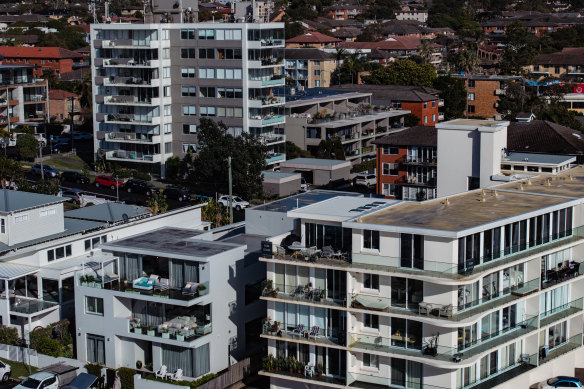- Exclusive
- Politics
- NSW
- Housing crisis
How nearly 50,000 homes are getting stuck in Sydney’s planning pipeline
By Max Maddison
Nearly 50,000 dwellings across Greater Sydney approved in 2021 and 2022 have not commenced construction, raising questions about whether Labor’s planning reforms can address housing supply.
The Department of Planning, Housing and Infrastructure forecasts that 151,670 new homes will be built in Greater Sydney by July 2029, below the 263,000 needed to meet the targets under the National Housing Accord.
As the Minns government tries to address declining approvals through the planning system, data analysed by University of Sydney Emeritus Professor Peter Phibbs showed that large-scale approved projects were not progressing to construction.

New planning data reveals that construction has not started on tens of thousands of approved dwellings.Credit: Nick Moir
Only 45 per cent of the 895 development applications for Sydney projects with at least 19 new dwellings approved in 2021 and 2022 had received a construction certificate – the final regulatory hurdle before building commences – by March 10 this year, Phibbs found. This left projects for 47,536 dwellings without a certificate.
Nearly 53,000 dwellings need to be built across Greater Sydney every year to reach the accord targets.
Phibbs said some projects could be slowly progressing to construction, but the fact most DAs were not progressing indicated a broader malaise.
“There is a significant issue in progressing existing approvals which warrants further investigation, and the widely held belief that the major constraint on construction is development approvals appears not to be the case,” he said, adding that “up-zoning” alone was not a solution.
“If we’re really trying to get more housing supply in the shorter term, we’re going to have to look at feasibility levers that will make projects more attractive and help unlock all the existing projects that are stuck due to lack of probability.”
Updated figures provided through the department’s Urban Development Program (UDP) show completions are down 18 per cent on the five-year average.
Developer lobby group Urban Taskforce’s chief executive, Tom Forrest, told members this month the data painted the “picture that everyone suspected”, noting approvals were less than 26,000 for the year up to June – down 24 per cent on the preceding five years.
“There’s a huge gap, and right now, there does not appear to be a strategy in place, with the tangible policies, to bridge that gap,” he wrote.
Urban Development Institute of Australia NSW chief executive Stuart Ayres said apartment developments were facing “some of the worst feasibility conditions in a generation”, but attributed delays to slow consents from government agencies.
Ayres called for the department’s reporting metrics to include DA timeframes from approval through to issuing construction certificates.
The feasibility issues appear to be affecting greenfield developments in Greater Sydney, where net completions have plummeted to nearly half their peak of 12,103 in December 2022.
In response to questions, Planning Minister Paul Scully said the former Coalition government’s planning environment was as “confused as it was confusing”, with some older development consents containing conflicting conditions, delaying construction certificates.
“This is being exacerbated by current macroeconomic conditions, building material costs increases, and shortages of skilled labour,” he said.
“But when economic conditions shift, we need an efficient and effective planning system.”
The Morning Edition newsletter is our guide to the day’s most important and interesting stories, analysis and insights. Sign up here.